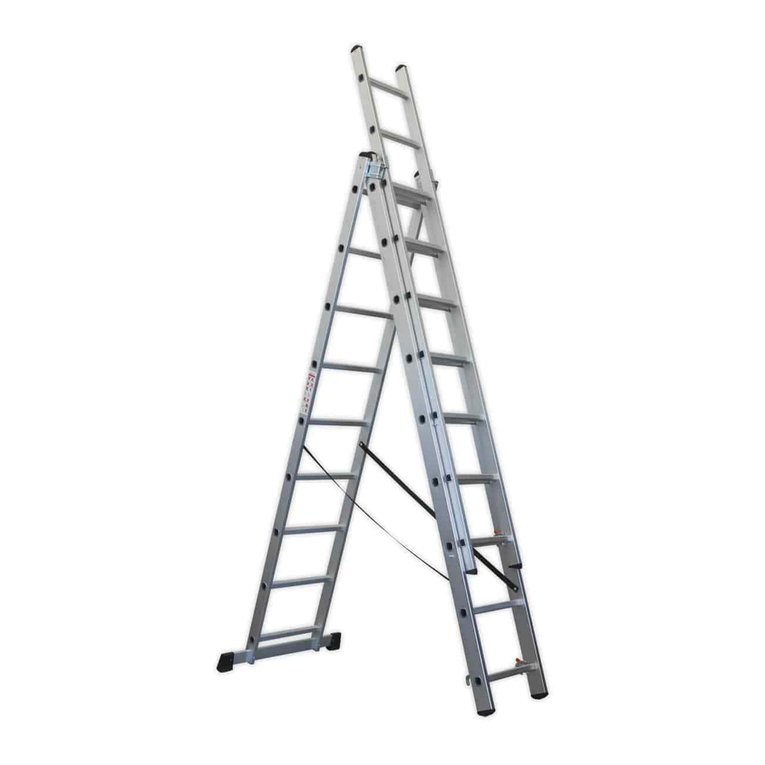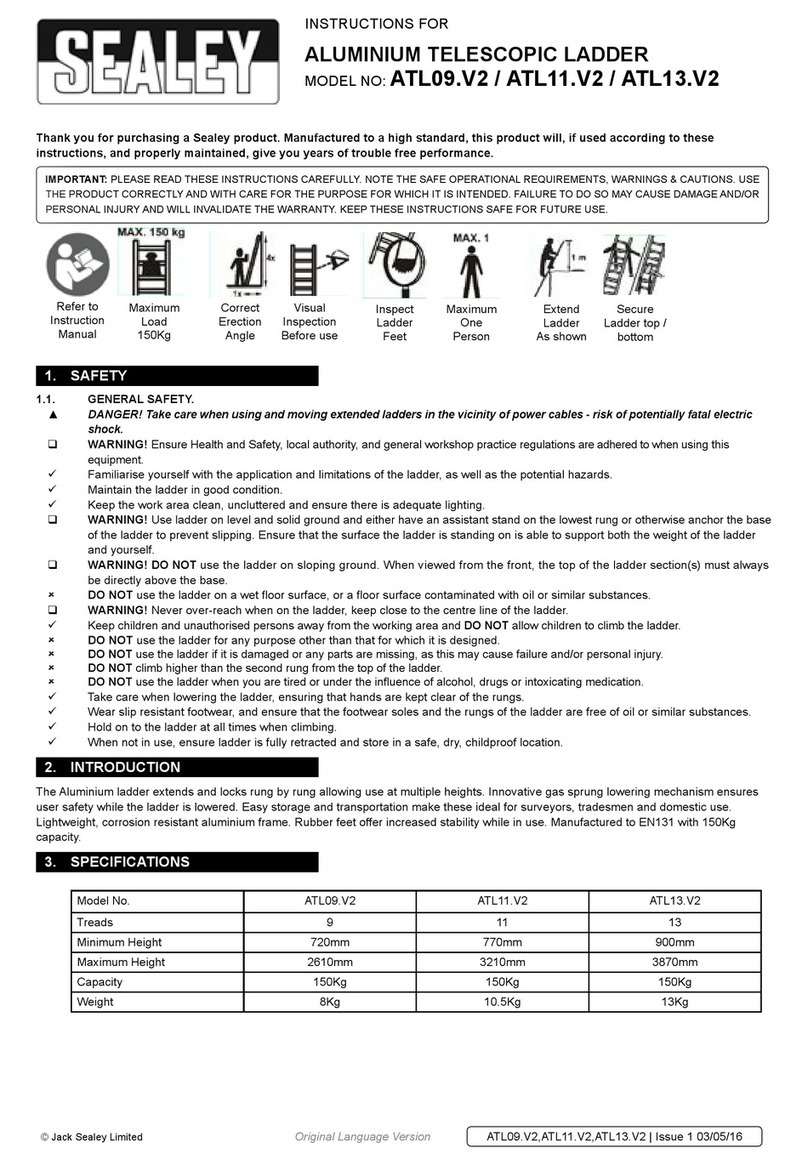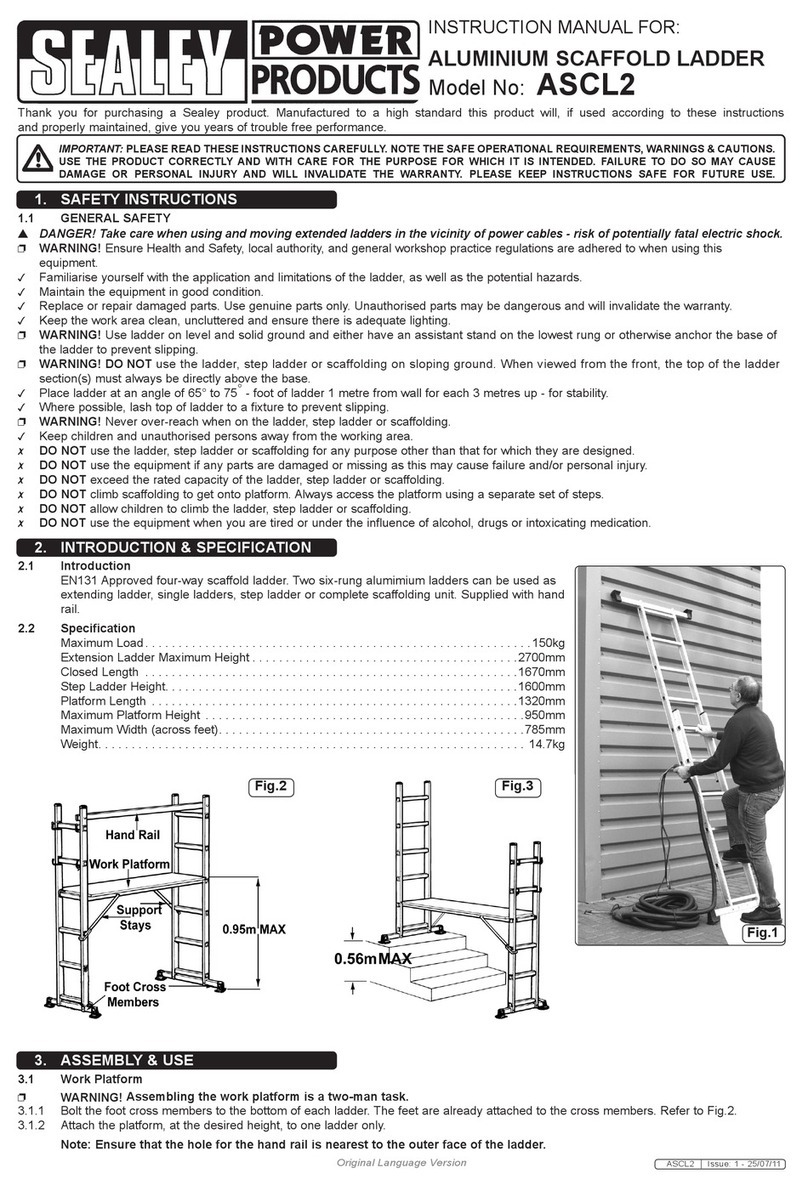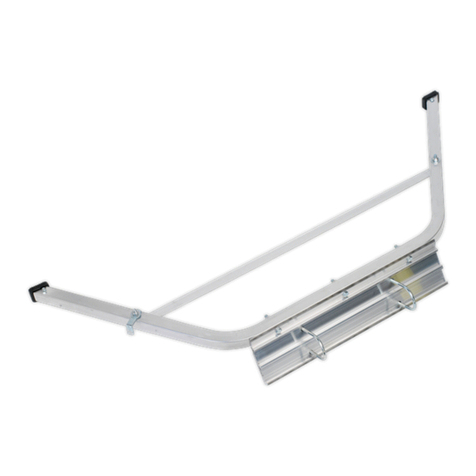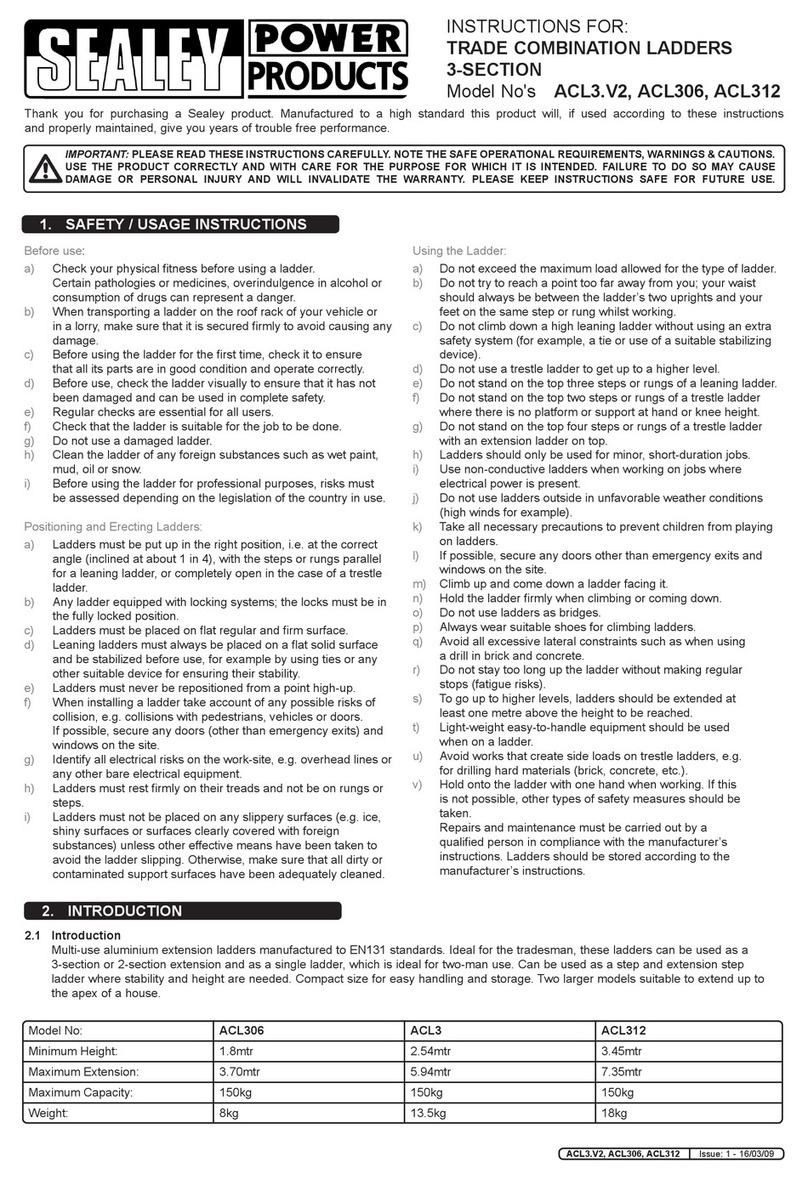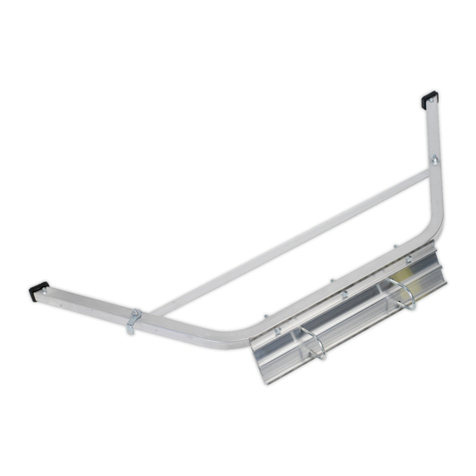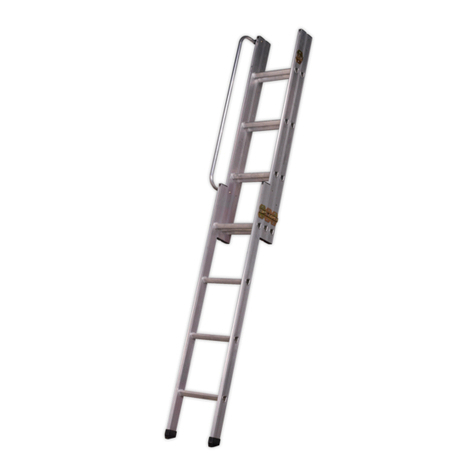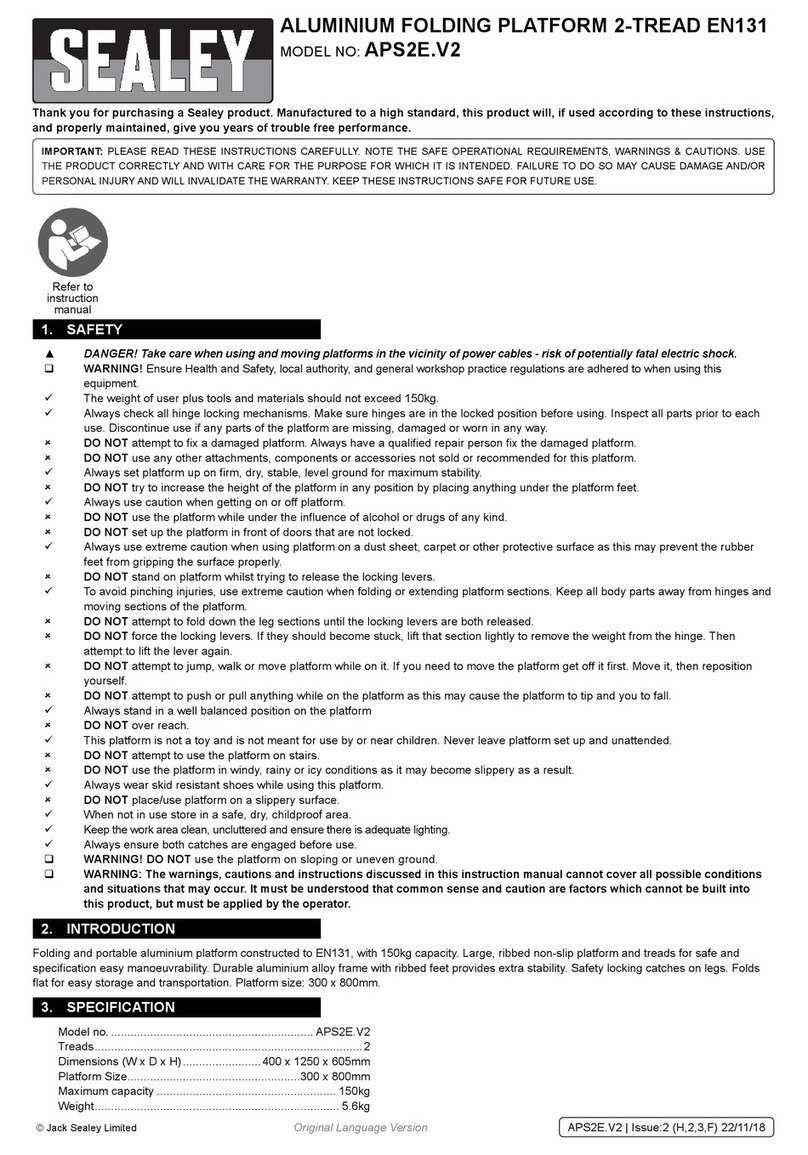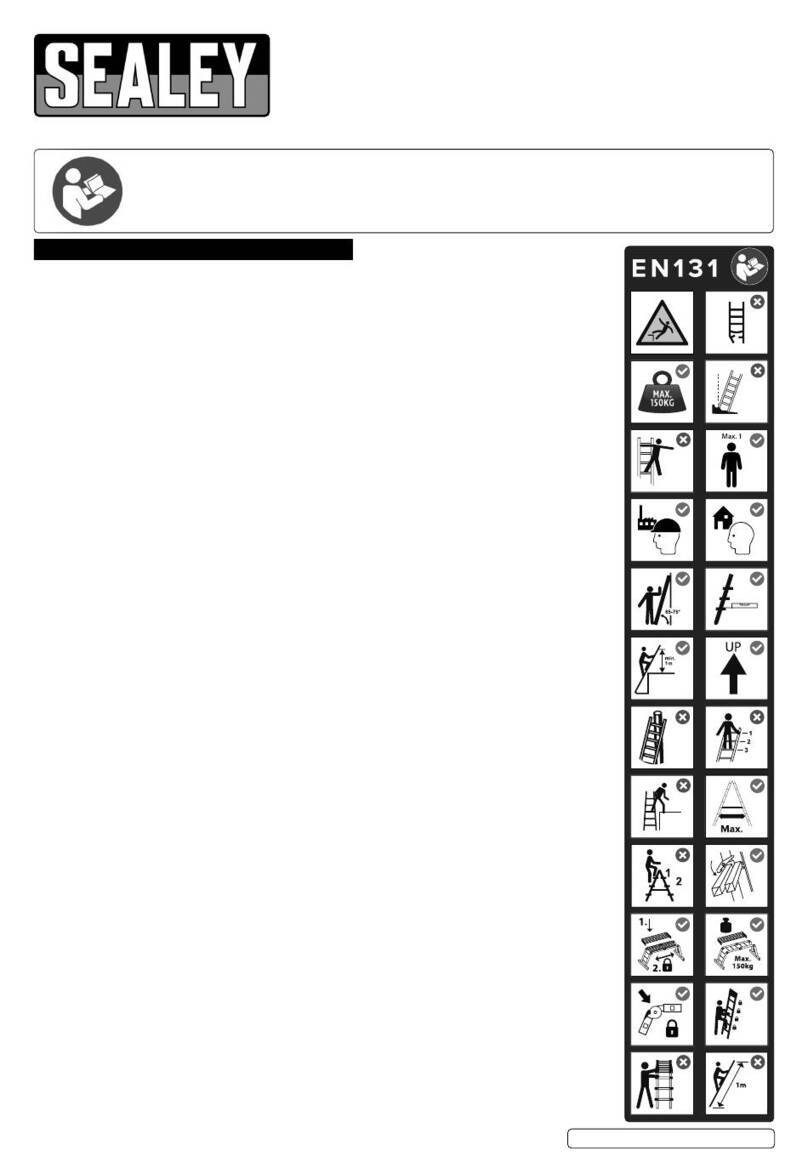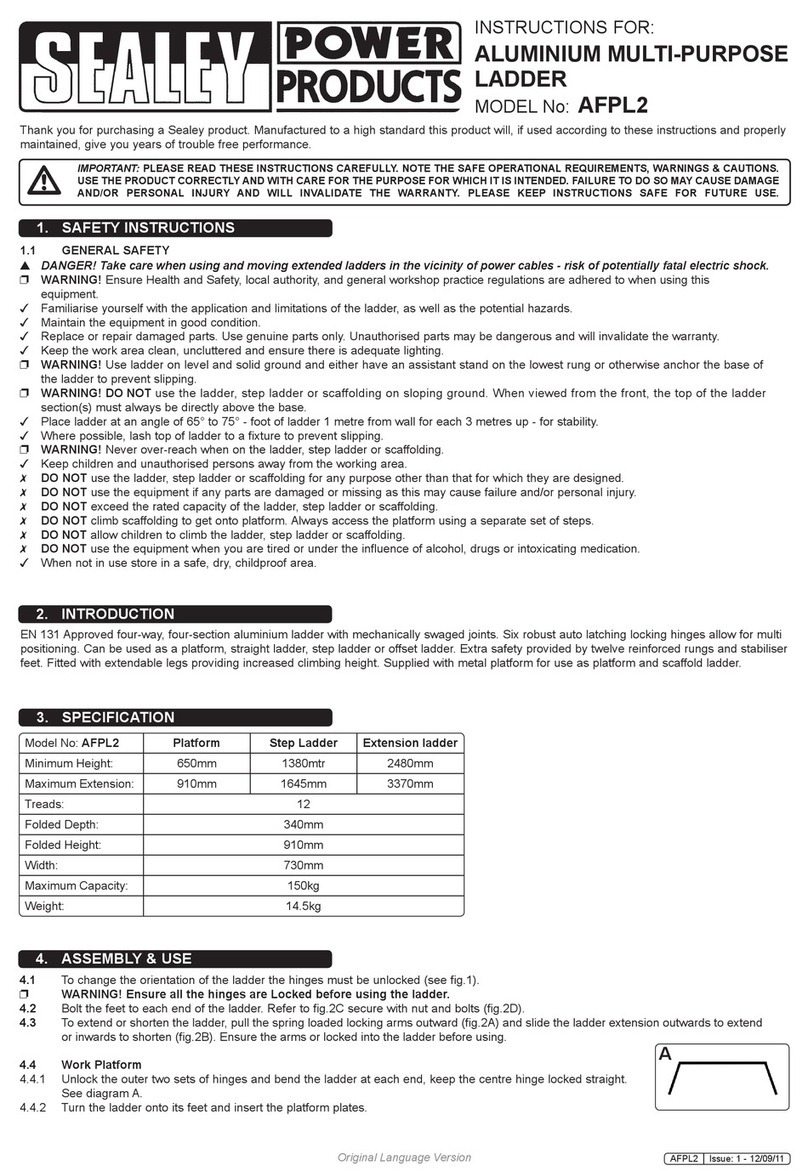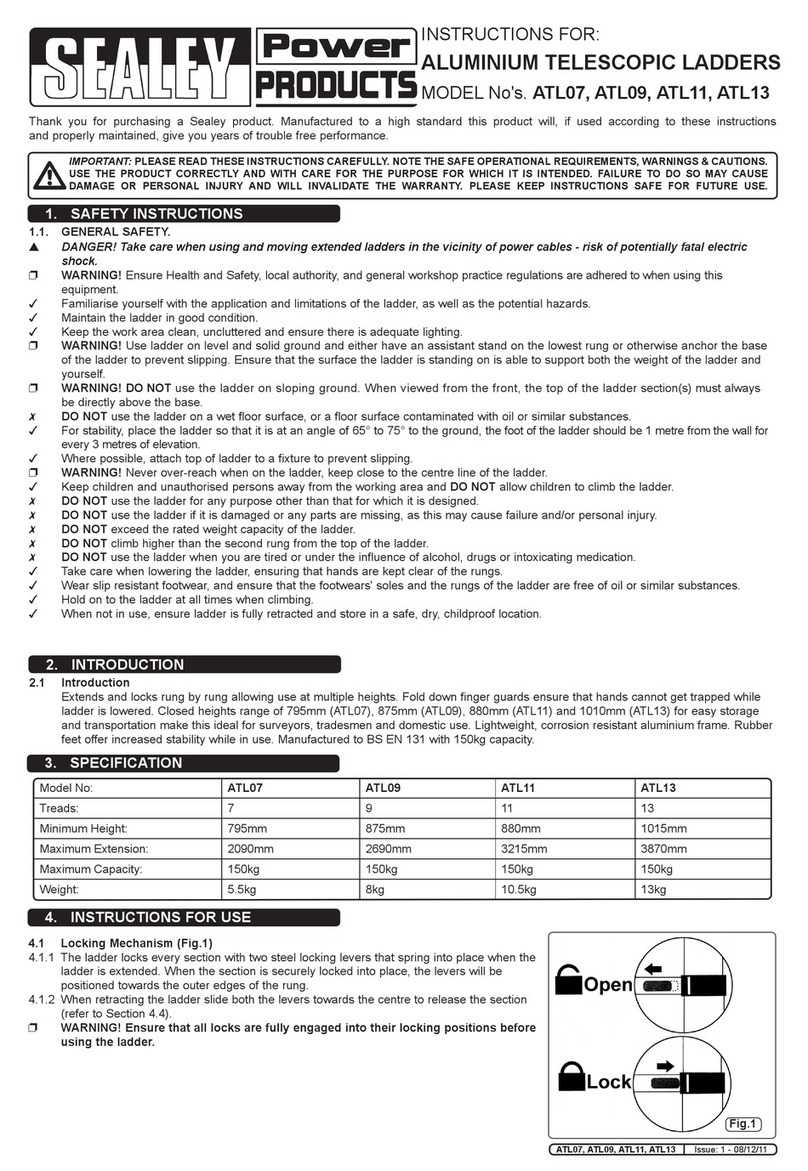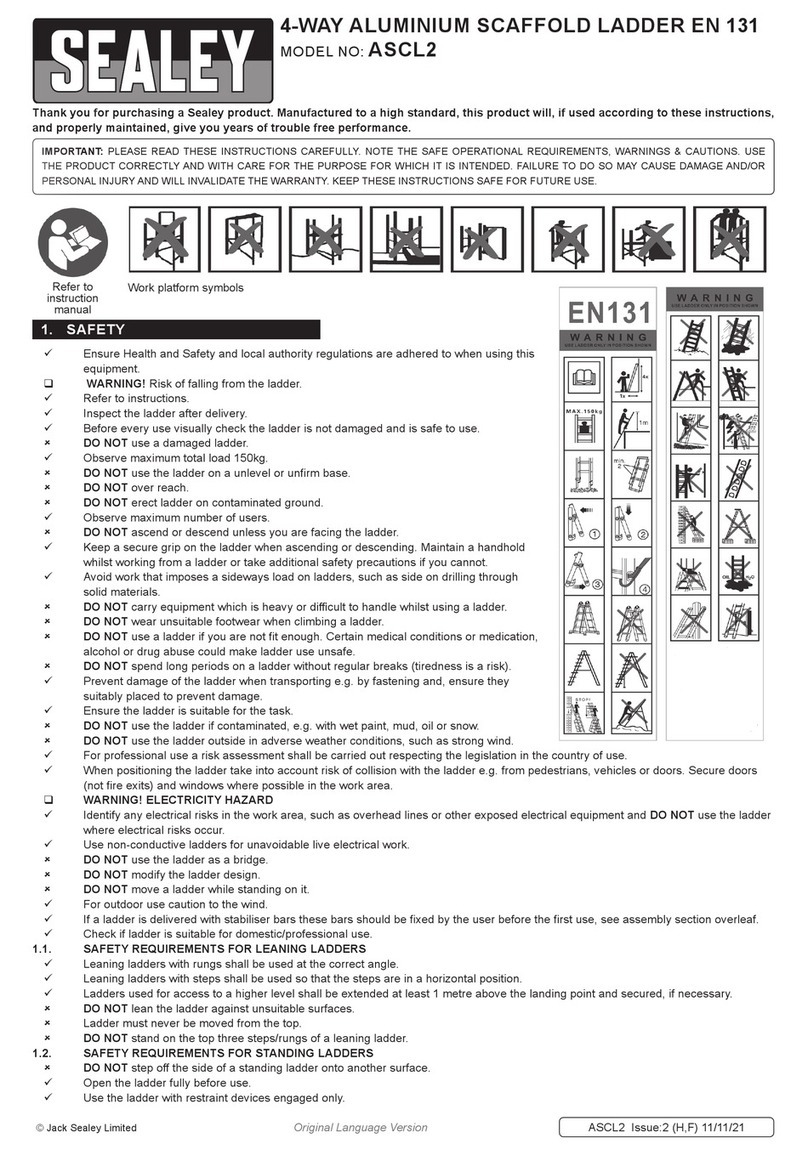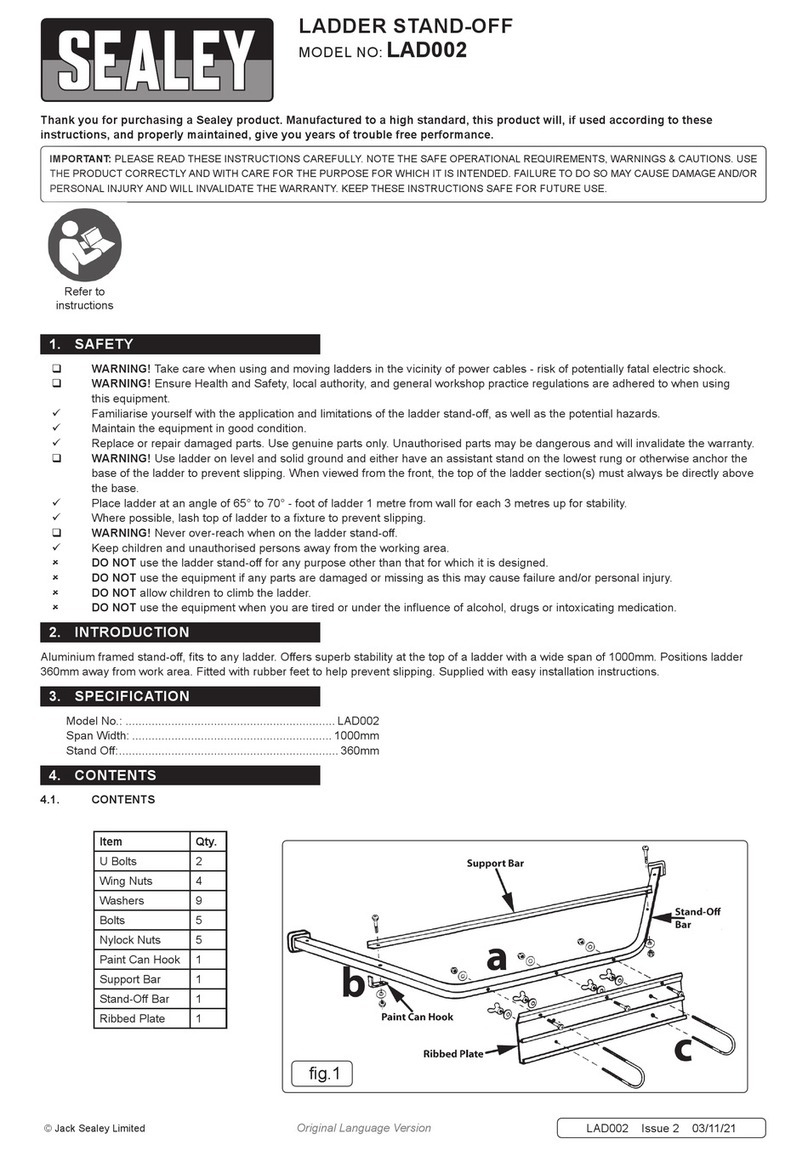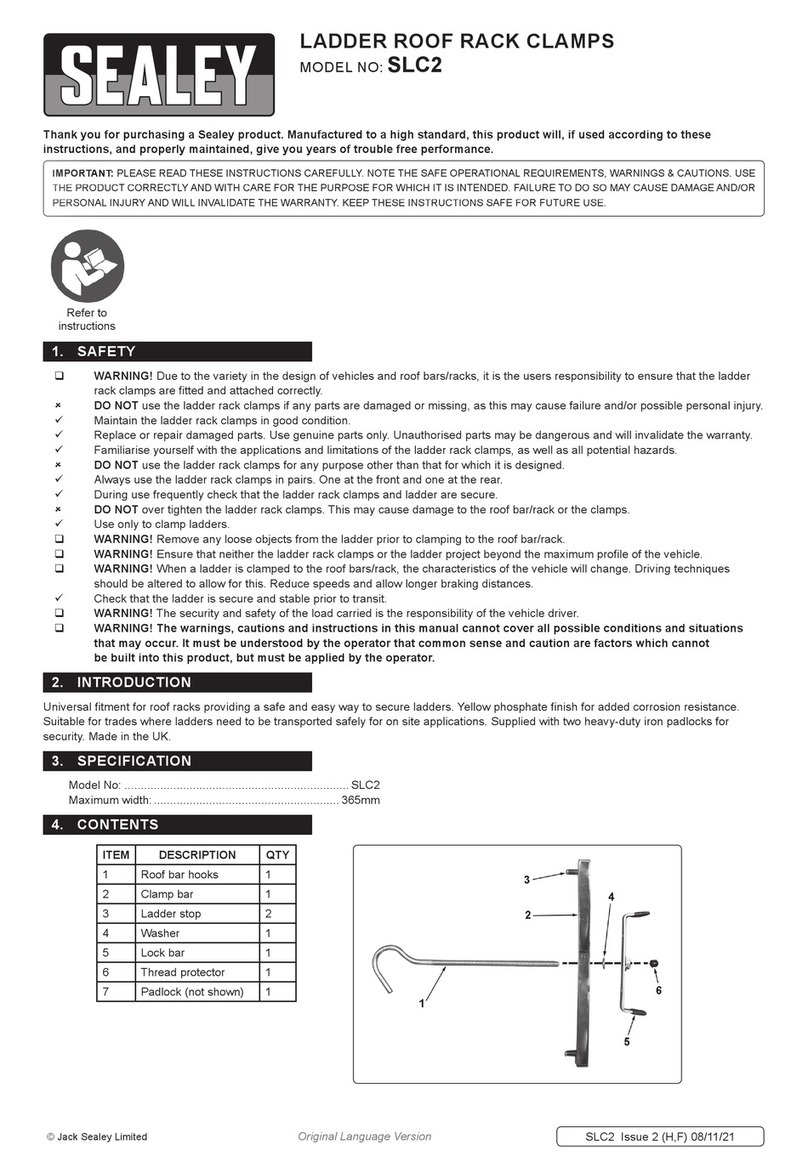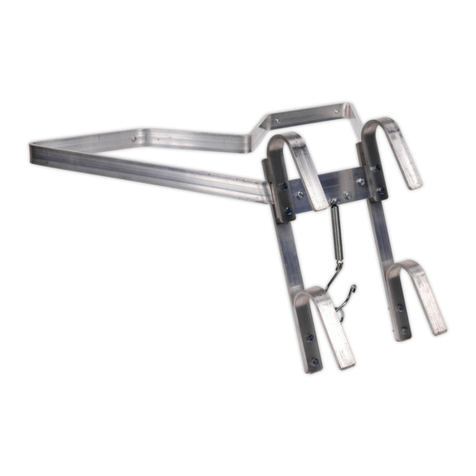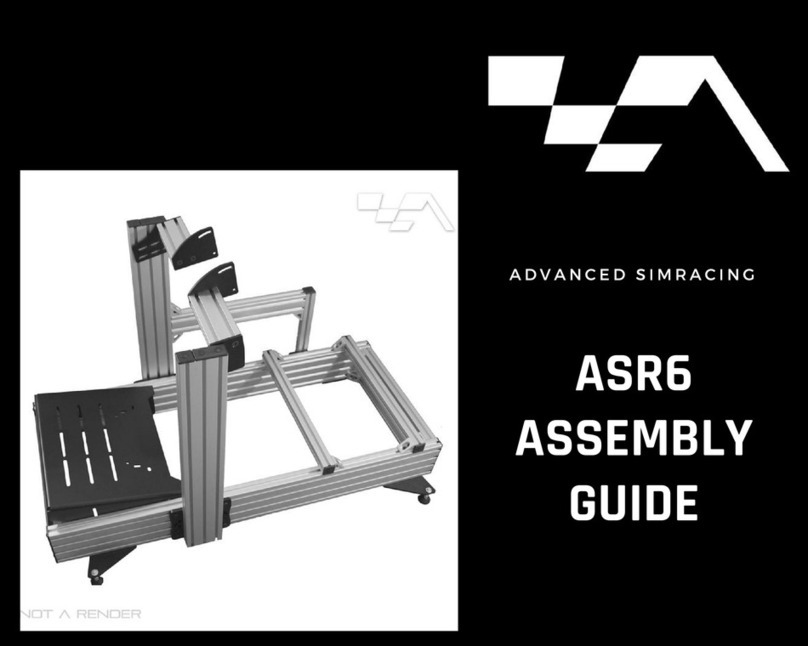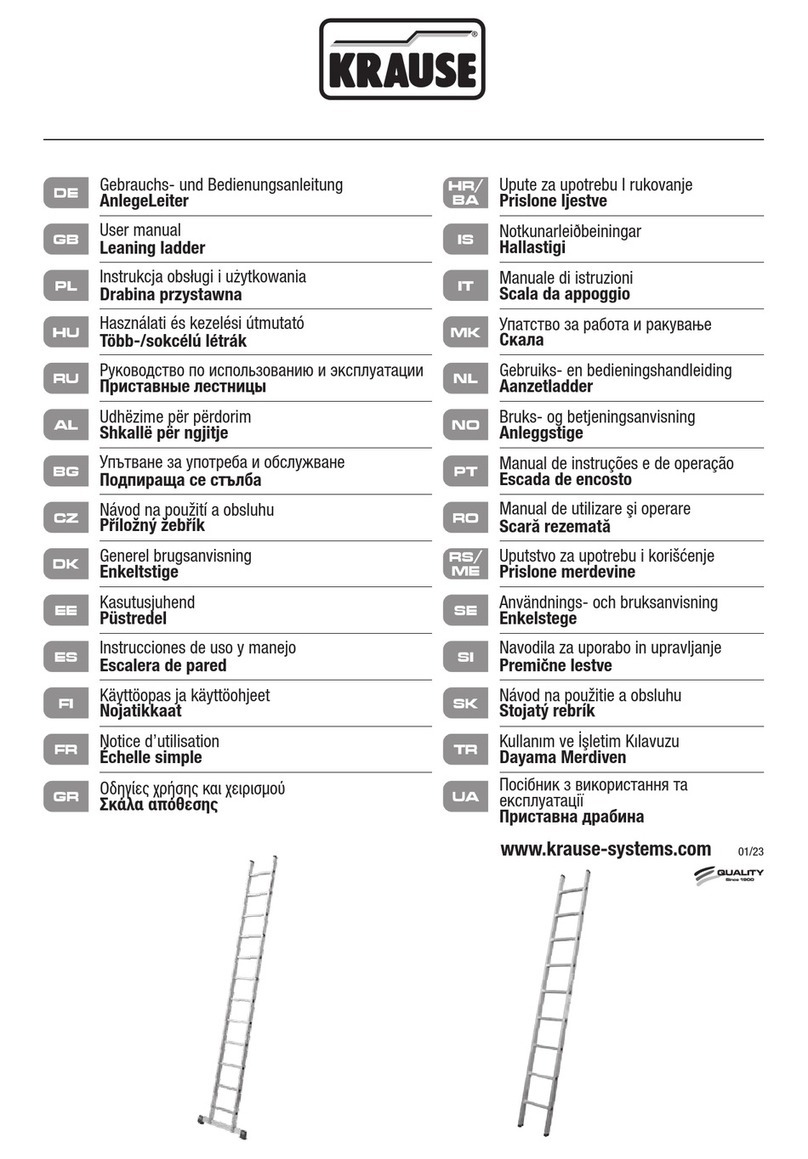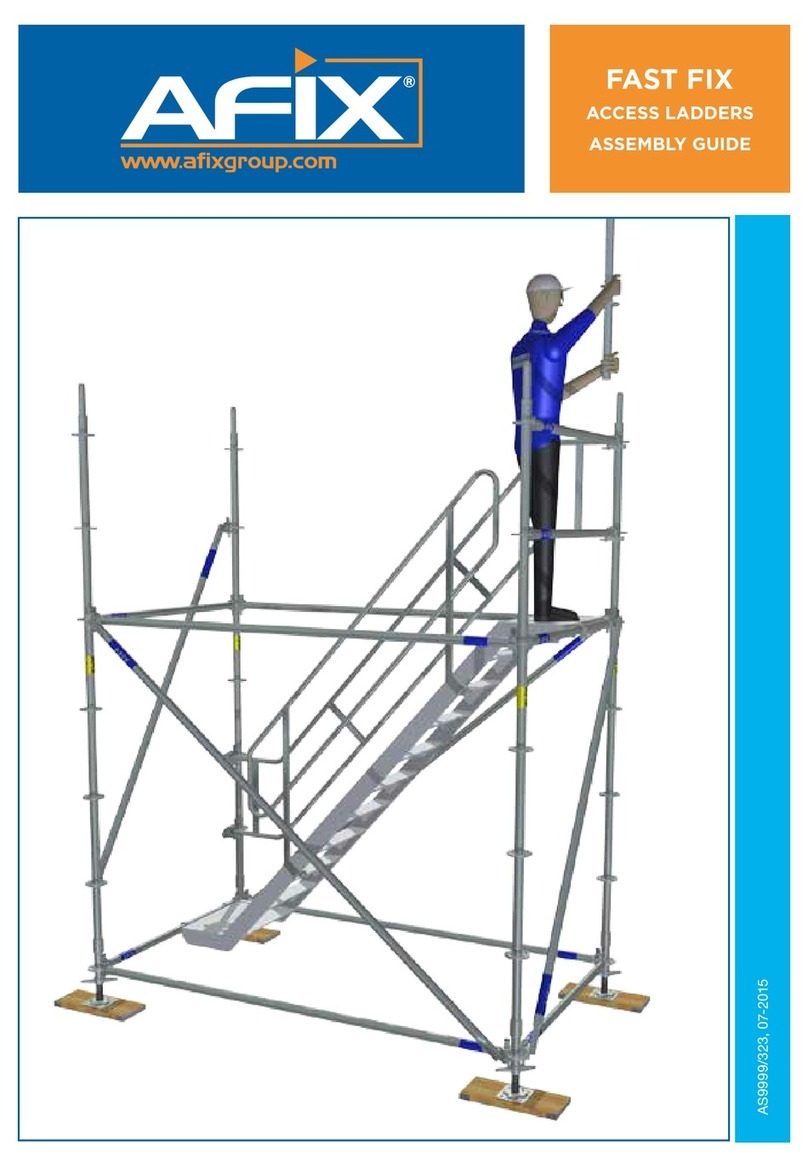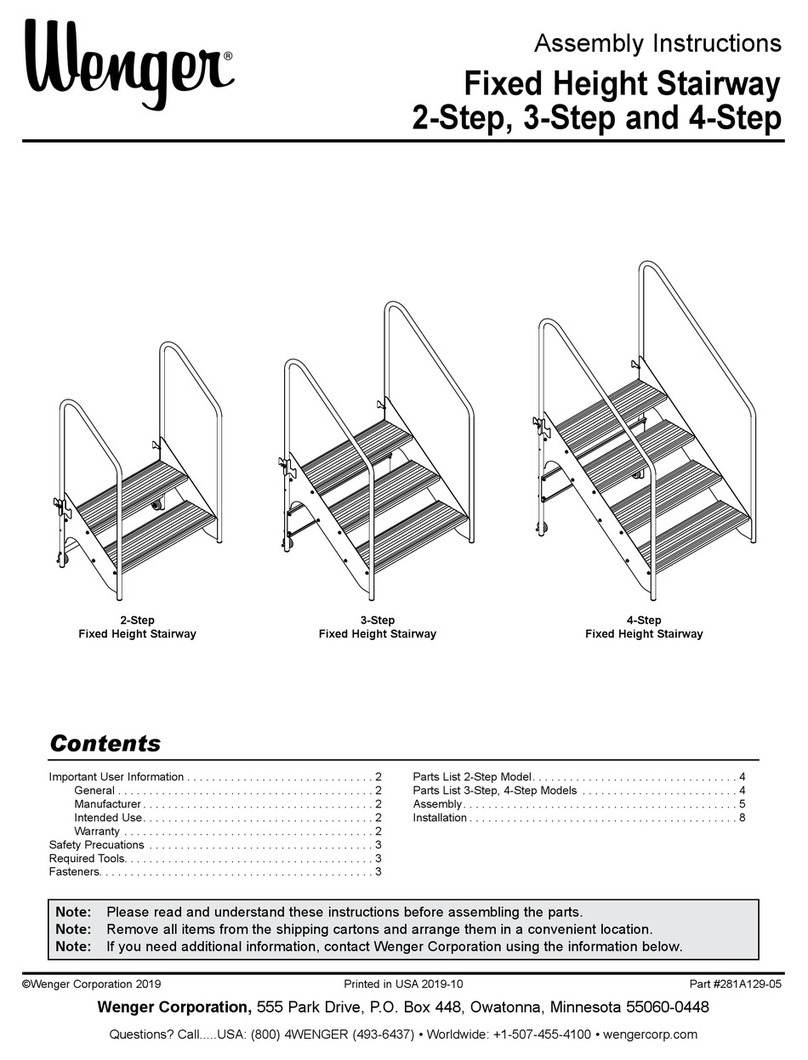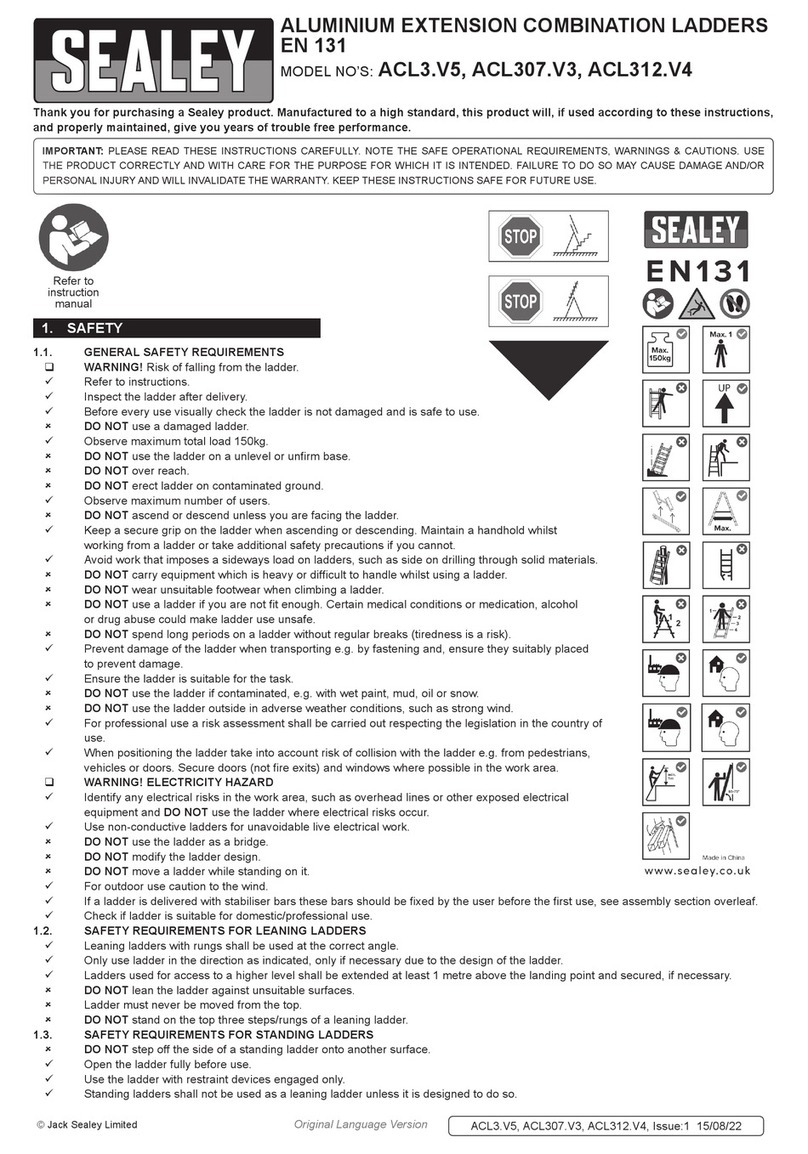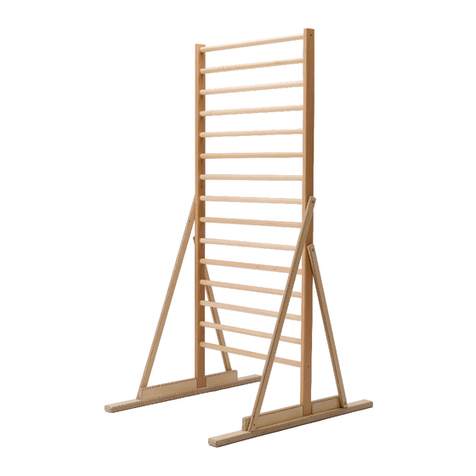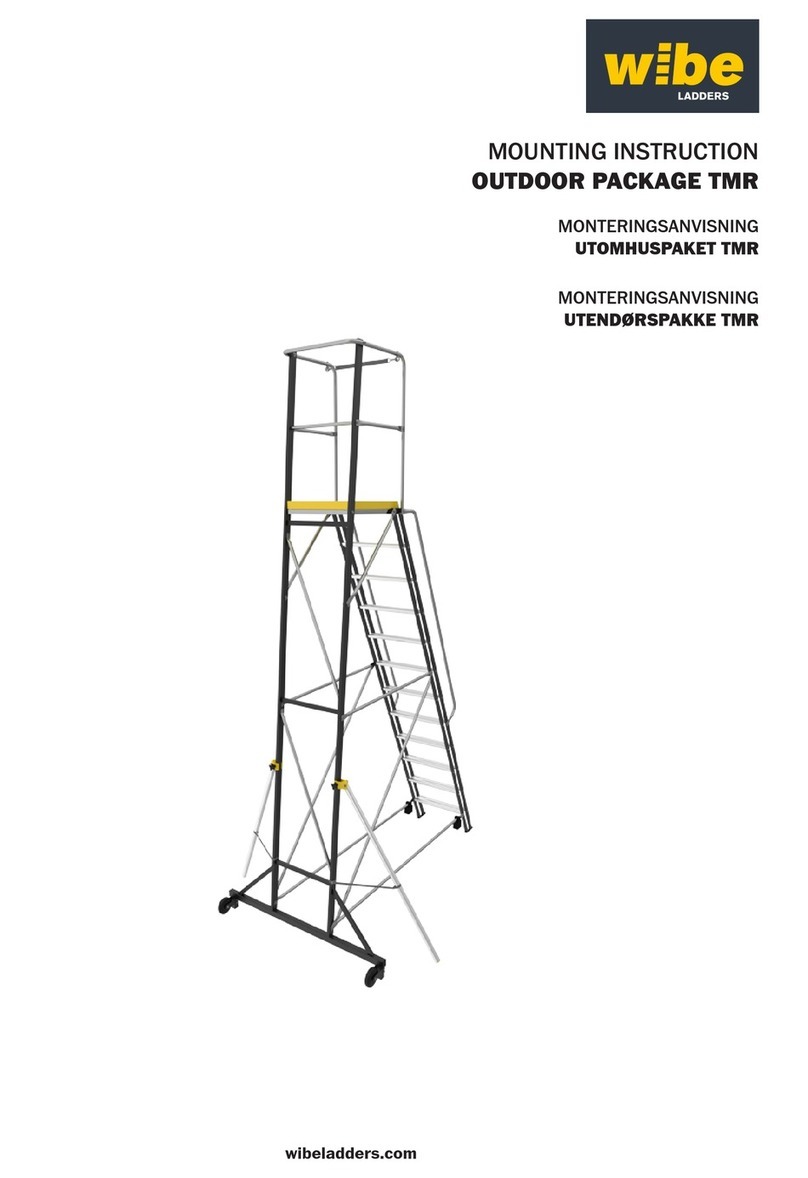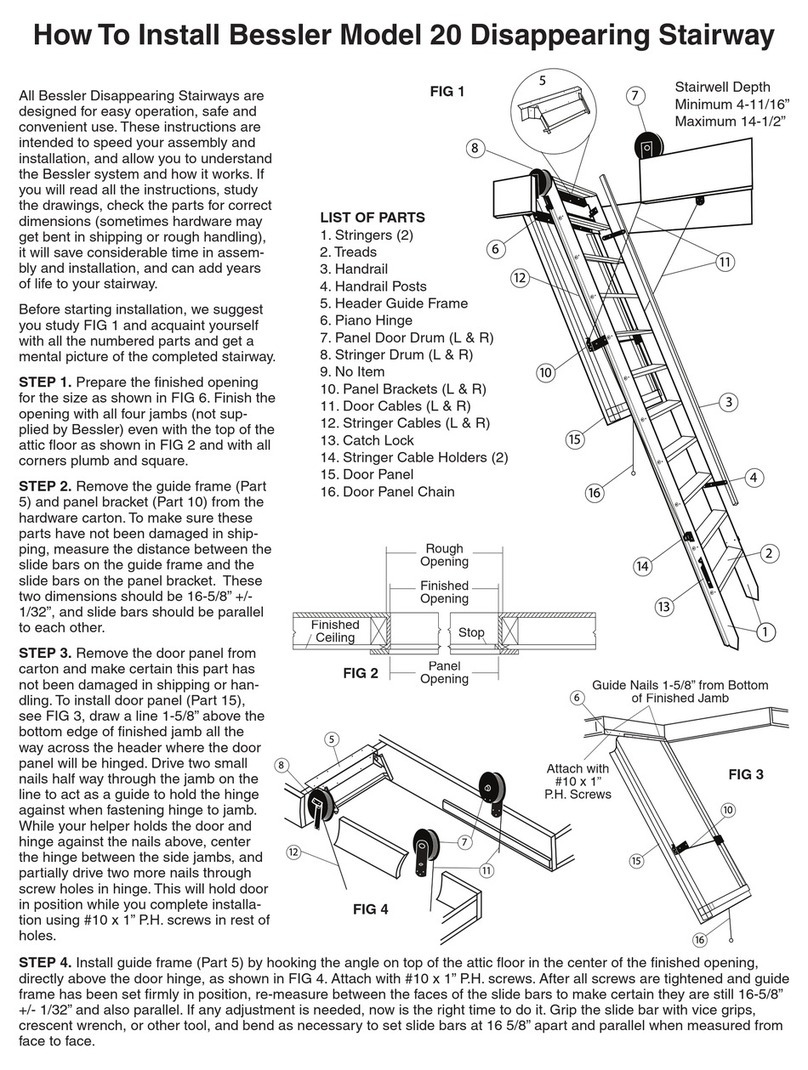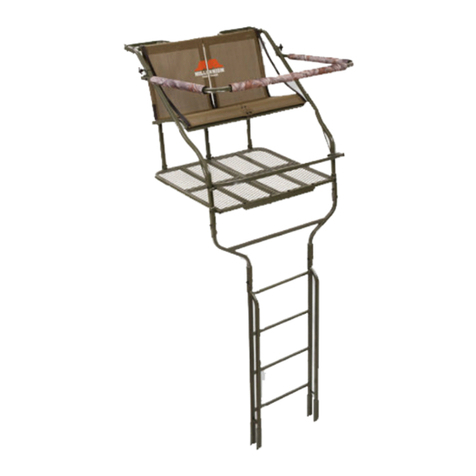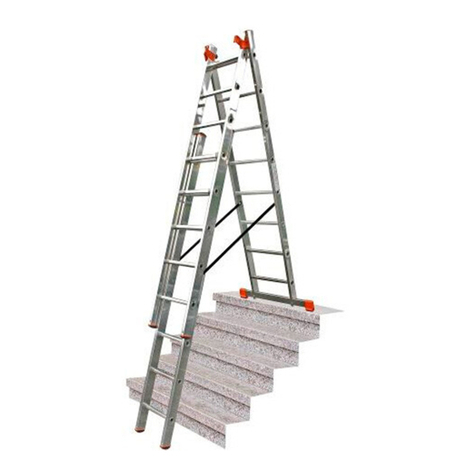
Original Language Version LFT03.V2 Issue: 1 - 04/08/11
5.10 Stow the loft ladder and fix the pivot bar stops:
5.10.1 Referring to fig.15a, release the bottom locking catch and slide the
front section of the ladder up until the catch automatically
re-engages.
5.10.2 Referring to fig.15b, release the top locking catch on the back
section of the ladder and slide the front and centre sections of the
ladder up until the locking catch automatically re-engages.
5.10.3 Referring to fig.15c, push the ladder up into the loft as far as you
can by hand, then insert the stowing pole into the side opening of
the bottom rung and carefully and slowly push the ladder up until it
comes to rest on the loft floor.
5.10.4 Referring to fig.15d, slide the second pair of pivot bar stops up to
the pivot bar sliders and tighten.
INSTALLATION IS NOW COMPLETE
NOTE: It is our policy to continually improve products and as such we reserve the right to alter data, specifications and component parts without prior notice.
IMPORTANT: No liability is accepted for incorrect use of this product.
WARRANTY: Guarantee is 12 months from purchase date, proof of which will be required for any claim.
INFORMATION: For a copy of our latest catalogue and promotions call us on 01284 757525 and leave your full name and address, including postcode.
01284 757500
01284 703534
sales@sealey.co.uk
Sole UK Distributor, Sealey Group,
Kempson Way, Suffolk Business Park,
Bury St. Edmunds, Suffolk,
IP32 7AR
www.sealey.co.uk
Web
email
6. USING THE LOFT LADDER
WARNING! Before using the loft ladder you must ensure
that:
6.1 All four pivot bar stops are secured in position and the screws
are fully tightened.
6.1.1 The handrail and all other fixings have been tightened.
6.1.2 You have read all the safety information contained in these
instructions and on the ladder.
6.2 When the ladder is deployed, check that:
6.2.1 The locking catches are fully engaged.
6.2.2 Both feet are on the ground.
6.2.3 The ladder is at the correct angle.
6.3 Closing and opening the trapdoor.
6.3.1 To close the trapdoor, insert the stowing pole into the twist
catch. Push the trapdoor up to its closed position and rotate the
catch clockwise to engage the catch.
6.3.2 To open the trapdoor, insert the stowing pole into the twist
catch and rotate it anti-clockwise to disengage the catch.
Carefully lower the trapdoor.
6.4 Stowing and deploying the ladder.
6.4.1 Referring to fig.17a, Insert the stowing pole into the side
opening of the bottom rung and carefully pull out and down at
the same time.
IMPORTANT: Always carefully control the descent of the
ladder and ensure that no animals or people are in danger
of being hit.
6.4.2 Referring to fig.17b, when the ladder stops, release the locking
catch (at the bottom of the ladder) and extend the ladder until it
engages with the other catch.
6.4.3 Referring to fig.17c, Release the locking catch (on the front
ladder section) and fully extend the ladder until it engages with
the other catch.
DO NOT use the ladder unless both locking catches are engaged.
Parts support is available for this product. To obtain a parts listing and/or diagram, please log on to
www.sealey.co.uk, email sales@sealey.co.uk or phone 01284 757500.
